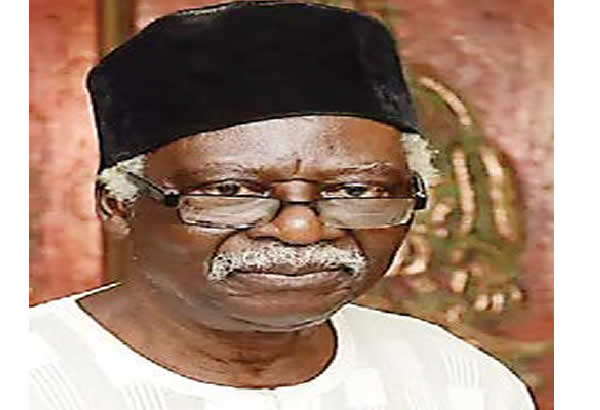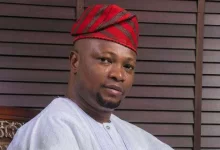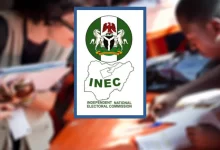Longevity runs in my family – 90-year-old Bruce Onobrakpeya

[ad_1]

Famous visual artist, Bruce Onobrakpeya, who recently turned 90, tells OLUWAFEMI MORGAN his daily routine has not changed, as he continues to work hard to cover more grounds
How do you feel clocking 90?
I feel fulfilled, happy and grateful to God.
Does longevity run in your family? For how long did your parents live?
Yes, my father actually lived up to around 112 (years); so we have to use that as a major (example). My mother lived up to about 86 years.
Have you ever had any near-death experience?
The first and the most scary was in secondary school when I had diarrhoea and did self-diagnosis – I took medication, which was actually something that we used to purge rather than something to stop diarrhoea and I started to feel dizzy. It was a near-death experience.
The other one was when I was almost graduating from the College of Zaria; I was doing some medical examination to complete a form for an employment. The vehicle that we were in was running from one side of the road to the other. Any little push could have tossed it into a gully or something else could have happened. But eventually, it got steady. I think those were the very serious ones. I never forget them.
People say old age can be lonely. Is this an experience for you, considering that some of your contemporaries, including Yusuf Grillo, have transited?
No, I don’t feel lonely. We miss them very much; their going away leaves some task for us. Art is a continuous task. For instance, Grillo’s altar pieces in the church, they removed them at the All Saints Church because they wanted a new one from abroad. I collected the altar pieces and we are restoring them at the Harmattan Workshop in Agbarha-Otor, Delta State, now. And when it is done, the beauty that we have enjoyed at the All Saints Church, we will continue to enjoy it there.
Yes, when they go we are sad, we mourn and so on but when the mourning period is over we realise that they left some task behind and we are to be strong enough to carry on those tasks and do some of the things that they left behind.
You’ve said in an earlier interview that artists have no retirement and that you were working on Mother Theresa at the time. What is your latest work?
There was a series I was working on before Mother Theresa and I continued after that; that series I called the Atasa series. Atasa is an Urhobo word for narration, when people are in a gathering and they have to talk about themselves, they take names or assume personalities or they want to narrate experiences to show wisdom or to show what they have encountered, or to show how vulnerable they are, or to show what they know about the philosophy of their people and so on. It is not something you can complete in a season.
What else have I been doing? Of course, after that I started the 60 Years Studio Practice Retrospective, a series of exhibitions in Lagos, and then one in San Diego, USA. In between that, there were other things I was doing which I had continued before. One of it was a series of works which had to do with the resettling of car spare parts, particularly the bumpers, plastics, tyre covers and so on; discarded materials. I called that series ‘The Beauty of Machine’. I am working with parts of vehicle and anything that has done its normal duty and is now being discarded, you now take them to live a new life and that new life is in artistic expression.
Can you possibly recall the number of artworks you’ve executed in your career life so far? Do you keep record of your works?
I don’t know; they are quite many.
Are your works catalogued, and do you envisage that a time will come when the government would want to repatriate your works from abroad?
Yes, they are catalogued in different exhibitions; one is in Freedom Park, that was called “The Beauty of Machine” and then another, Art 21, which was at the Eko Hotel, where I was nicknamed the Façade of the Nigerian Art. Before being named the Façade, I also had an exhibition of prints in one of the hotels in Ikoyi, and then the Idi Owena Exhibition, which is most recent in San Diego, USA. Those are the four exhibitions that have occupied me within this one year.
I want to say quickly that most of my artworks are not abroad. My collectors, the strong base I have, are here in Nigeria, and then my art goes into the hands of Nigerians. Yes, there are strong, important works that have gone out but we have very important works here too.
Repatriation, yes, if they want them repatriated but you see, the works that leave my hand, they are negotiated and paid for, and it is not like they were taken away, either through theft or through political manipulation; we don’t have anything like that.
At the beginning of our artistic encounter, we had expatriates but later on, the Nigerians took over and were patronising us. Much of my works, I won’t be able be able to give you the fraction, but I don’t think there would be much need to put on a campaign about bringing my works from abroad.
Even some of the works that are auctioned abroad I am aware that they are bought by Nigerians in Diaspora. Some may be in foreign hands but many of them are in the hands of Nigerians, and the threat of that kind of exodus, I don’t think it is rampant as it has been in the past.
What do you make of the new wave or repatriation of stolen artworks to Nigeria?
I don’t think I am comfortable with the idea that the Benin artworks were stolen; they weren’t stolen. Benin was a great empire and they fought a war with another empire, and it was the only case in West Africa where the people fought a foreign empire, and whatever artworks they had were collected as war booty. They (the artworks) were not stolen. On that level, I really want to say that when you mention the circumstances under which they were taken away, it puts Benin at par with all foreign empires. It was an empire versus an empire.
Do you agree that those works should be repatriated?
I agree that they should be repatriated; they were taken away under certain circumstances. If you look at the history of what caused the war you really couldn’t blame the Benin.
Benin had their festivals and the foreign emissaries were coming, and they told them not to come, because at this time they were not ready to entertain visitors, but the white man refused and went in. Things happened to them; you don’t have to blame the dog that bit them (white man) or anything that happened to them.
Who do you think should really be the custodian of the repatriated artworks and how can Nigeria make the best of them?
Benin was an empire and they faced an empire and if you are returning anything that has to do with the empire, it should go back straight to Benin. Those things that were taken from Benin were in the records of Benin history, and they were for special rituals, and special duties. They should be taken back there. It does not matter whether the people have changed their religion now or whatever, they should take them there, and it is the Benin monarchy that should decide what to do with the works, not the Federal Government.
The best thing to do by the Federal Government or state government is to build something there under the control of the monarchy and let them do the kind of things that those works were doing before they were taken away or put them at the service of the people, for tourism or education. Let them decide on it.
In your long repertoire of works, you must have some that really stand out in your mind. Can you speak about that?
My works are in periods, so that cannot be determined now because there is no way for anyone outside to have a survey and make comparison that this period was stronger than the other period; or that the works done in a particular time were better than the other ones.
There is no curator now to do that kind of analysis. It is not possible now. Doing that means that you have to track the works both inside and outside Nigeria, including the ones that people have not seen, either that I am hiding away or the works in progress. People can say that out of the ones we have seen so far, these ones stand out but I am not in the position to do that.
At what point did you begin to make big money from your works?
I don’t know what you call good money, or big money.
I remember at a point someone told me that you were almost giving your works out to people for free. Is that correct?
They are fairly correct because I believe that for an artist, it is the work that has left his or her hand that sells whatever the artist produces. Works that are hanging on the walls of people and collectors will make other people ask about the artist and seek to meet the artist. So, I try as much as possible to put these works in other people’s possession. My art is sometimes produced in multiples so that when more people see those works, more people will like them and will want to see them. So, allowing the works to leave my hands almost free is a strategy to make my works reach a lot of people.
Where are some of the places around the world that your works can be found?
I think my works will be in almost every country in the world. The numbers I don’t know, but as many people that come from many parts of the country, and as much as they hear about what is produced by me, and as much as they are interested, they do collect and then they take them away. Sometimes, the works are bought by somebody and sent as presents. Sometimes collectors, gallery owners or people who showcase exhibitions collect these things and take them away. As soon as the work is produced, the work has its own life and many works have travelled very far away.
What do you think stands your works out?
I wouldn’t be able to say what stands them out but I want to say that I am preoccupied with the environment. I am preoccupied with the philosophy of our people, nature; I am interested in politics, folklore, myths, legends and the life that is not even seen. Sometimes, my works are also quite scientific; derived from the scientific formula. So, in that respect, you will find that they cover a very wide spectrum of interests.
You belong to the old generation of artists that brought great honours to this country. What do you think of the current generation of Nigerian artists?
They are doing very great. What I think about them is that they are very lucky that they have their own people to inspire them, teach them and nurture them.
For our own part, we were nurtured partly by foreigners. This generation are being mentored by their people, with the same philosophy, and they breathe the same air as them.
Also, the world is growing and these younger people are able to imbibe those new ideas, infuse them into their works and produce things that are highly rated and are quite superior and novel than the works of our own generation. They have combined the mentorship with the advantage of time that they have and so on and they are producing very nice works.
What is happening at Agbarha-Otor?
It is one of the legacies that the older generation is passing onto the younger generation. I stopped teaching in Saint Gregory’s College in 1980; by 1984, I had bought a piece of land, by 1998, and I had built something on it and established what we call the Harmattan Workshop today.
Since 1998 to this time, we have been receiving artists there who are learning one craft or the other. Even younger people who didn’t have the opportunity to go to school learn something and take that away. It gives them an opportunity to make a living from what they do. Young people who are in the university and so on also come to learn, and even artists who are professionals come there, interact with one another, give lectures, and by the time they spend a session there and go back, they are refuelled, and they have the ability to work for another one year, and then they come again and refuel.
It is an informal art school that is doing very well, nursing and promoting the art at different levels. We have the headquarters in Delta State, but we also have a centre here in Lagos and from the centre here in Lagos, we receive visitors, artists, we also have workshops for young people.
People come from all over Nigeria and our neighbours in Cameroon, Benin Republic, Togo, and even from abroad, Belgians, Americans, French, Sri Lankans all come to the workshop at Agbarha-Otor. They come together to share ideas and they are able to work as artists to make the environment where they are richer and better for them.
Music is placing Nigeria on the world stage, what can be done for visual art to achieve the same result for the country?
That is what we are doing in Agbarha-Otor. What is very important is that the people that attended those workshops again set up workshops, institutions in their various localities, teaching people the craft. Those who have attended the workshop have collected some kind of experience so much that we now hire them to teach at the Harmattan Workshop. So we can see that what we are doing affects many people. That place has a museum, a ground where musicians practise, where the structures and the items within the buildings attract filmmakers too use décor for their films.
Looking at the environment, looking after the museums, taking care of the participants and so on make it labour and so we are able to bring employment to the area where we are in. The workshop helps us to fulfil a lot of things.
What are your thoughts about next year’s presidential election?
I want a President that will look at the things that are working in the country and improve on them, while also looking for ways to solve some of the pressing problems in the country. It is important that the country move forward.
At 90, what is your daily routine like?
My daily routine has not changed at all. I wake up in the morning, do a normal Bible reading and then sometimes too if I wake up in the morning about 3am or 4am, after the reading and so on—I do write in the night. Thinking in the night or in the early morning is very clear, some of the problems that you couldn’t solve during the day, in the morning they are very clear. Sometimes the answers come to you.
I pray, now around 6 ‘o clock, don my shorts and do some jogging. Come back take some tea, or kola nut and so on, have a bath and maybe if there are chores to be done, around 8am to 9am, the assistants begin to come. I allocate jobs to them to do and I myself I take an aspect of the job and begin to do. Around the same time, I take breakfast. I rest a bit and go back to the studio, supervise and so on till about 12pm or 1pm; rest and then in the afternoon, I still supervise.
Maybe visitors will come, I talk to them. I sit in my parlour around 5pm to 7pm, watching the television, listening to the household arrangements for this and for that. Before you know it, it is night; toil, rest, you stay with the members of the family. By 4am to 6am, you are waking up again to face the day’s work.
What milestones are you looking to cover in the next years ahead?
I have a number of books to put together. The scripts are there, the plans are there and the mock-ups are being done. I have ideas too; as soon as a period of artistic creativity ends, another period of artistic creativity comes in.
But the principal concern I have is (to achieve) more development in Agbarha-Otor. We have to build more galleries, proper galleries, some of the galleries we have now are makeshift galleries. We also need to extend the hostels, make them better and then find a way to solicit money and then pay facilitators or instructors. And then we want to improve the environment. Some of the structures are makeshift. We need to provide more amenities within those structures.
We have a 10-year plan; we are looking at residences and we are trying to affiliate with some other governments, institutions and so on to help us make those residences workable. When we have that kind of support, we can now bring people from other parts of the world. Their air fare paid, their food paid for and so on and then we can be thoroughly international.
[ad_2]



